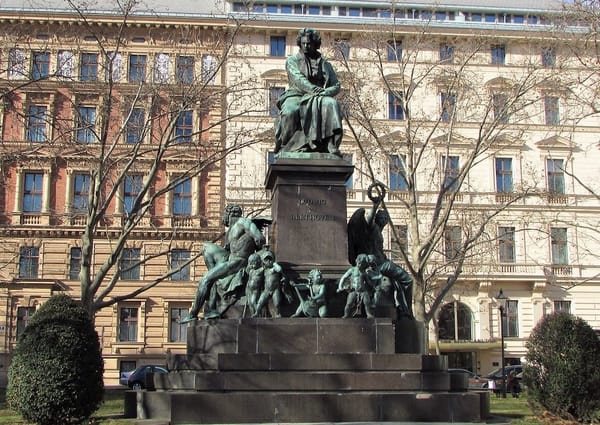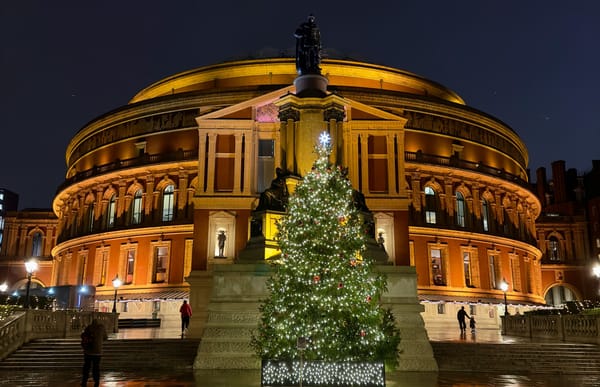A Beginner’s Guide to Understanding Indian Classical Instruments
Indian classical music is defined by its unique instruments like the sitar, tabla, veena, and sarangi. Each instrument adds depth and emotion, creating intricate melodies and rhythms that evoke a rich spiritual and cultural experience.

Indian classical music is an ancient and profound art form, deeply rooted in spirituality, emotions, and cultural traditions. Central to its practice are a variety of traditional instruments, each contributing its own unique sound, texture, and meaning to the performance. These instruments help create the distinctive mood and depth for which Indian classical music is known. For newcomers to the genre, understanding these instruments opens the door to a richer experience. Let’s dive deeper into some of the most iconic and important instruments in Indian classical music.
Sitar
The sitar is one of the most recognized Indian classical instruments and is closely associated with the Hindustani (North Indian) classical tradition. It features a long neck, multiple resonating strings, and sympathetic strings that vibrate subtly to enrich its sound. The sitar has a distinctive bright, twangy tone and is known for its ability to produce both fast rhythmic runs and deeply emotional glides between notes.
The sitar rose to international fame through masters like Ravi Shankar, who performed across the world and collaborated with Western artists like George Harrison of The Beatles. In classical performances, sitar players often open with a slow alap, where they explore the raga (melodic framework) at their leisure before moving into faster, rhythmic sections. The sitar’s capacity for intricate improvisation makes it a central instrument in Hindustani music.
Tabla
The tabla is the rhythmic backbone of Hindustani classical music. It consists of two hand-played drums—the smaller dayan, tuned to a high pitch, and the larger bayan, which produces a deep, resonant bass sound. What sets the tabla apart is the wide range of sounds it can produce, thanks to the varied ways a player strikes the drums. Using different parts of the fingers and palms, tabla players create rhythmic patterns, called taals, that interact with the melodic instruments and singers.
A skilled tabla player can create rhythms that are both complex and delicate, adding to the overall dynamics of the performance. Renowned tabla virtuosos like Zakir Hussain have brought the instrument to international acclaim, showcasing its versatility beyond classical music and into genres like jazz, fusion, and global music.
Veena
The veena, an ancient plucked string instrument, is central to Carnatic (South Indian) classical music. It has a large resonating body and is held horizontally while the player uses one hand to pluck the strings and the other to move along the frets. The veena is capable of producing both complex rhythms and lyrical melodies, giving it a versatile role in classical compositions.
Traditionally associated with the goddess Saraswati, the veena is often seen as a symbol of knowledge and art. The sound of the veena is deep and resonant, with players sliding along the frets to produce expressive glides between notes—a hallmark of Indian classical music. While less internationally known than the sitar, the veena is revered in India for its spiritual and cultural significance.
Sarod
The sarod is another prominent string instrument in Hindustani classical music. Unlike the sitar, the sarod has a smooth metal fingerboard, allowing players to slide effortlessly from note to note, creating a fluid and meditative sound. The sarod has no frets, which gives it a unique tonal quality and allows for subtle, continuous note bends called meends.
The sarod’s deep, soulful sound is particularly well-suited to slow, contemplative ragas. Legendary musicians like Ali Akbar Khan have elevated the sarod to international status, showcasing its ability to convey profound emotion. While it requires considerable technical skill to master, the sarod remains one of the most expressive instruments in Indian classical music.
Bansuri
The bansuri, a simple bamboo flute, is an instrument of immense beauty and tradition in both Hindustani and Carnatic music. With its soft, airy tone, the bansuri is capable of capturing the essence of nature and evoking a wide range of emotions. Traditionally associated with the Hindu god Krishna, the bansuri has a deeply spiritual connection and is often used to represent themes of love and devotion in Indian mythology.
The bansuri’s simplicity belies its technical complexity. Players must master breath control and finger placement to produce the subtle nuances required in classical performance. It can be both melancholic and uplifting, making it a highly versatile instrument. In classical music, the bansuri is often featured in compositions that aim to evoke natural or pastoral imagery, adding to its timeless appeal.
Mridangam
In Carnatic classical music, the mridangam is the primary percussion instrument, providing the rhythmic foundation for both vocal and instrumental performances. Unlike the tabla, which consists of two separate drums, the mridangam is a barrel-shaped drum with two heads that produce different pitches. It is known for its deep, resonant tone and the variety of rhythmic patterns it can generate.
Mridangam players are highly skilled in improvisation, often creating complex rhythmic patterns (known as laya) that interact with the main melody. The mridangam plays a crucial role in enhancing the dynamic range of a performance, contributing to the ebb and flow of energy. Famous mridangam maestros, such as Palghat Mani Iyer, have left an indelible mark on Carnatic music.
Tanpura
Though it does not play melodies or rhythms, the tanpura is an essential instrument in Indian classical music. It provides a continuous, harmonic drone that serves as the foundation for the melodic instruments and vocalists. The tanpura’s four or five strings are tuned to specific notes of the raga being performed, creating a resonant backdrop that helps anchor the performance in a specific tonal framework.
The sound of the tanpura is subtle yet vital. It helps establish the tonal center of the raga, allowing musicians to stay grounded as they explore intricate melodic and rhythmic variations. While it is often considered a background instrument, the tanpura’s constant drone is what gives Indian classical music its meditative and immersive quality.
Santoor
The santoor is a hammered dulcimer from Kashmir, traditionally used in the folk music of the region but now also a part of the Hindustani classical tradition. The instrument consists of a flat wooden box with strings stretched across it, which are struck with lightweight mallets to produce sound. The santoor’s bright, shimmering tone gives it a unique place among classical instruments.
The instrument requires a delicate balance between speed and precision, as players must strike the strings in rapid succession while maintaining control over dynamics. In Indian classical performances, the santoor is often used to bring a lively, energetic feel to the music. Renowned musicians like Shivkumar Sharma have popularized the instrument on the global stage.
Shehnai
The shehnai is a double-reed wind instrument, similar in sound to an oboe, and is often used in auspicious events like weddings and religious ceremonies in India. In Hindustani classical music, the shehnai is known for its piercing, soulful sound that is said to evoke a sense of devotion and reverence. It has a cylindrical wooden body with a flared bell at the end, which amplifies its distinctive tone.
The shehnai was brought into classical prominence by Ustad Bismillah Khan, who mesmerized audiences with his virtuosity and ability to evoke deep emotions through the instrument. The shehnai’s rich, penetrating sound makes it well-suited for both celebratory and solemn performances, and its role in classical music goes beyond technical mastery—it is often seen as a symbol of Indian tradition and culture. In a classical concert, the shehnai is usually accompanied by the tabla and other percussion instruments, adding rhythmic complexity to its haunting melodies.
Harmonium
While the harmonium is not a traditional Indian instrument, it has become an integral part of both Hindustani classical and devotional music. Originally from Europe, the harmonium is a small, portable reed organ with a keyboard. It was introduced to India in the 19th century by European missionaries but quickly found a home in classical and folk traditions due to its versatility and ease of use.
The harmonium is widely used to accompany vocalists in classical music, as its ability to sustain notes allows it to provide a continuous, rich harmonic backdrop. In qawwali and bhajan performances, the harmonium plays a central role, helping to drive the spiritual and devotional aspects of the music. Despite some criticism for its limitations in microtonal expression (which is essential in ragas), the harmonium’s popularity has endured due to its practicality and distinctive sound.
Sarangi
The sarangi is one of the most expressive bowed string instruments in Hindustani classical music, known for its ability to mimic the nuances of the human voice. It is played with a bow, similar to a violin, but its playing technique is far more complex. The sarangi has a wooden body with gut strings, and players use the nails of their left hand to stop the strings while bowing with the right hand.
The sarangi’s sound is often described as soulful and heart-wrenching, capable of conveying intense emotions. It was traditionally used to accompany vocalists, particularly in the genres of thumri and ghazal, but has also gained recognition as a solo instrument. The sarangi’s versatility and depth make it a powerful tool for expressing the subtleties of ragas, with its rich tones evoking a wide range of emotions from joy to sorrow.
Nagaswaram
Similar to the shehnai but primarily used in South Indian (Carnatic) music, the nagaswaram is a long, double-reed wind instrument with a powerful, loud sound. It is often played in temples and during processions, symbolizing auspiciousness and divinity. The nagaswaram has a broader range than the shehnai and is considered one of the most difficult wind instruments to master due to its complex fingering and embouchure techniques.
In Carnatic music performances, the nagaswaram is often played alongside the tavil, a barrel-shaped percussion instrument. The combination of the nagaswaram’s penetrating sound and the tavil’s dynamic rhythms creates a festive, energetic atmosphere that is integral to many South Indian cultural ceremonies. Its commanding presence has made it a revered instrument in both classical and devotional music traditions.
Pakhawaj
The pakhawaj is a two-headed drum, similar to the mridangam, but is primarily used in Hindustani classical music. It is particularly associated with dhrupad, an ancient and solemn form of Hindustani music. The pakhawaj produces deep, resonant tones and is played by striking the drum heads with both hands. Its rhythmic patterns are typically slower and more intricate than those of the tabla, making it ideal for the grandeur and gravity of dhrupad performances.
The pakhawaj’s sound is more open and less sharp than the tabla, and it adds a weighty, majestic quality to the music. It is also used in various regional and folk traditions across India, demonstrating its adaptability and deep-rooted cultural significance.
Conclusion
Indian classical music is as much about the instruments as it is about the melodies, rhythms, and emotions it conveys. Each instrument in the Indian classical tradition brings its own character and depth to the music, creating a rich tapestry of sound that has captivated audiences for centuries. From the plucked strings of the sitar and veena to the resonant beats of the tabla and mridangam, each instrument is carefully crafted to evoke specific moods and complement the raga being performed.





